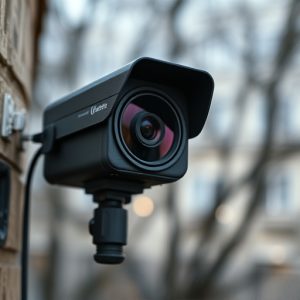Unveiling Hidden Cameras: Advanced Scanning Techniques for Safe Monitoring
Hidden recording devices, or concealed cameras, have advanced significantly, finding uses in home se…….
Hidden recording devices, or concealed cameras, have advanced significantly, finding uses in home security, employee monitoring, and babysitter surveillance. Parents seeking to protect their children at home must understand these devices' capabilities. Advanced scanning methods like infrared signals and pattern analysis help detect hidden cameras, empowering caregivers for safety, trust, and privacy protection against potential babysitter risks. While ethical and legal questions arise from their use, advanced techniques using thermal imaging cameras and AI software have proven effective in identifying concealed cameras, especially for babysitter monitoring.
Uncover the secrets behind hidden recording devices with our comprehensive guide. Explore advanced scanning methods to detect concealed cameras in homes, a growing concern for parents considering Concealed Cameras for Babysitter Monitoring. We delve into ethical considerations and legal aspects surrounding their use, ensuring informed decisions. From traditional techniques to cutting-edge technologies, this article offers a detailed overview of identifying hidden cameras, providing valuable insights for tech-savvy parents seeking peace of mind.
- Understanding Hidden Recording Devices: A Comprehensive Overview
- Techniques for Detecting Concealed Cameras in Homes
- Ethical Considerations and Legal Aspects of Monitoring with Hidden Devices
- Advanced Scanning Methods and Technologies for Uncovering Hidden Cameras
Understanding Hidden Recording Devices: A Comprehensive Overview
Hidden recording devices, also known as concealed cameras, have become increasingly sophisticated tools in various contexts. From home security to employee monitoring and even babysitter surveillance, these devices offer a sense of peace of mind by providing visual evidence in real-time. Understanding their capabilities is essential for anyone looking to employ such technology, especially when it comes to ensuring the safety and well-being of children at home.
When it comes to Concealed Cameras for Babysitter Monitoring, several advanced scanning methods help detect these hidden devices. This involves utilizing specialized equipment that can pick up on infrared signals or analyzing video feeds for any unusual patterns or pixels that might indicate a hidden camera’s presence. By employing these techniques, parents or caregivers can be confident in their ability to safeguard their children from potential risks and maintain trust within their care arrangements.
Techniques for Detecting Concealed Cameras in Homes
Detecting concealed cameras in homes has become a critical aspect of ensuring privacy and security, especially when it comes to babysitter monitoring. Traditional methods involve visual inspections and manual searches, but with technological advancements, more sophisticated techniques have emerged. One effective approach is using thermal imaging cameras, which can detect heat signatures from electronic devices, revealing hidden cameras that might be disguised as everyday objects.
Additionally, signal scanning methods play a pivotal role in identifying these covert devices. Radio frequency (RF) signal analyzers are employed to scan for unusual or unauthorized wireless signals, common in concealed cameras. This technology allows professionals to pinpoint the source of the signal, leading them to the hidden camera’s location. Such techniques are particularly valuable when parents suspect their babysitters might be using concealed cameras for invasive monitoring purposes, emphasizing the importance of proactive measures to safeguard personal spaces and protect family privacy.
Ethical Considerations and Legal Aspects of Monitoring with Hidden Devices
The use of hidden recording devices, particularly concealed cameras for babysitter monitoring, raises a series of ethical and legal concerns. While parents may deploy these tools to ensure their children’s safety, it’s essential to respect privacy rights. The mere presence of a hidden camera can create an atmosphere of distrust and potentially lead to misuse of the recorded footage. Ethical guidelines suggest that any surveillance should be transparent and proportional to the perceived risk.
Legally, regulations vary by region but generally require explicit consent from all parties involved for recording conversations or activities. Using concealed cameras without the knowledge of babysitters or nannies could constitute a breach of privacy laws. Parents must also ensure that the recorded content is stored securely and accessed only under appropriate circumstances, adhering to data protection legislation. Transparency and legal compliance are crucial to maintaining a fair and just practice in monitoring with hidden devices.
Advanced Scanning Methods and Technologies for Uncovering Hidden Cameras
In the realm of hidden camera detection, advanced scanning methods and technologies have emerged as powerful tools to uncover concealed cameras, especially in scenarios like babysitter monitoring where privacy and safety are paramount. One such method involves the use of thermal imaging cameras, which detect heat signatures, making them effective in identifying electronic devices that emit heat, such as covert cameras. These thermal scanners can pinpoint hidden cameras by revealing temperature variations on walls or objects, alerting users to potential surveillance equipment.
Another innovative approach is the integration of artificial intelligence (AI) and machine learning algorithms into scanning systems. AI-powered software can analyze video feeds and still images for subtle anomalies or patterns indicative of hidden cameras. By continuously monitoring and learning from visual data, these technologies become increasingly adept at detecting even the most sophisticated concealed cameras used for babysitter monitoring or other purposes. This method offers a proactive approach to privacy protection, ensuring that surveillance remains visible and preventable.
In light of the evolving technology surrounding hidden recording devices, understanding their capabilities and limitations is paramount. From the safety concerns raised by concealed cameras in homes to the ethical debate around babysitter monitoring, this article has explored a range of techniques and technologies. Advanced scanning methods offer promising avenues for detecting hidden cameras, but they must be employed responsibly within legal boundaries. As technology advances, so too does our need to balance privacy with security, making ongoing dialogue and regulation crucial to navigate this complex landscape.


